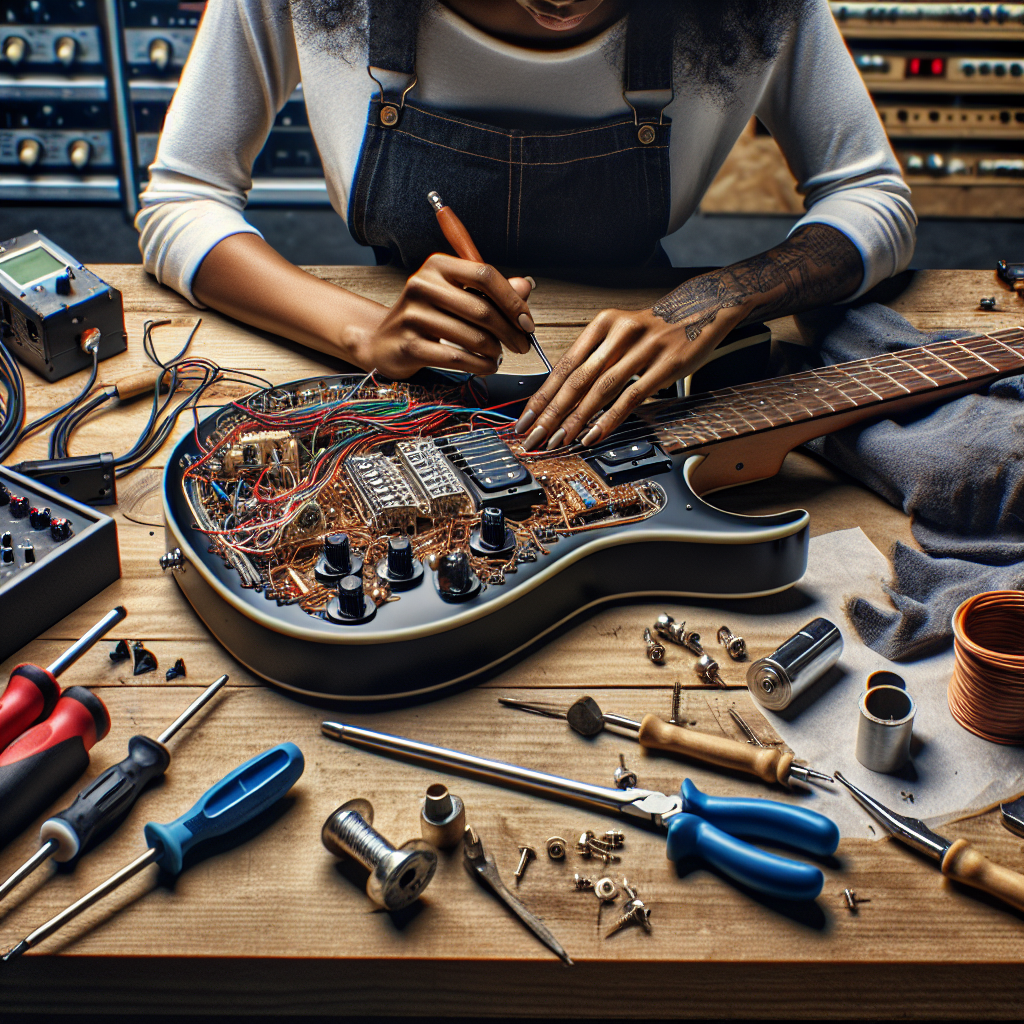
7 Steps to Creating a Custom Wiring Diagram for Your Guitar
Designing a custom wiring diagram for your guitar can seem daunting, but it can breathe new life into your instrument. Whether you want to add new features or simply improve the current setup, a custom wiring diagram ensures your guitar meets your exact needs. This guide will walk you through seven essential steps to creating a custom wiring diagram. Let’s dive in!
Step 1: Understand the Basics of Guitar Electronics
The first step in creating a custom wiring diagram for your guitar is understanding the basic components involved in guitar electronics. Your guitar likely has pickups, potentiometers, a selector switch, a jack, and capacitors. Knowing how these components work together is crucial. Each part plays a significant role in shaping your guitar’s sound, and understanding them will help you design a better wiring setup.
Step 2: Identify Your Goals
Before sketching out your wiring diagram, identify what you want to achieve. Are you looking for a new sound? Do you wish to add a kill switch, coil-splitting, or phase reversal? Clearly define your objectives to tailor your wiring diagram accordingly. A well-defined goal not only makes the process smoother but also ensures you achieve the expected results.
Step 3: Gather the Necessary Tools and Materials
Once you have a goal, gather the necessary tools and materials. You’ll need a soldering iron, solder, wire cutters, screwdrivers, and insulating tape. Ensure you have all the components required for your new wiring setup, such as new pickups or additional switches. Having everything ready will save time and keep you focused on creating your custom wiring diagram.
Step 4: Study Existing Wiring Diagrams
Before drafting your custom diagram, study existing wiring diagrams similar to your plan. Understanding proven electrical layouts helps inform your design and ensures it’s functional. You can find a plethora of resources online, such as Fralin Pickups, that offer a variety of standard wiring diagrams to review. Examine how components are connected and take notes for your blueprint.
Step 5: Create Your Custom Wiring Diagram
Now that you’re familiar with guitar electronics and have a clear goal, it’s time to create your diagram. Use paper and pencil or digital design software for precision. Map out each component and draw connections thoughtfully, considering the interaction between each part. Clarity is crucial; a well-organized diagram is easier to follow during implementation and troubleshooting.
Step 6: Test the Components
Before wiring everything together, test individual components to ensure they function as expected. It’s easier to troubleshoot separate parts than the entire setup. Confirm the integrity of your connections and the performance of your new components. If something does not work, it’s simpler to identify faults at this stage rather than later.
Step 7: Implement Your Wiring Diagram
With your diagram in hand, it’s time to apply it by re-wiring your guitar. Carefully desolder existing connections and follow your diagram to attach new components. Be patient and take your time to ensure clean solder connections, which will prevent future electrical issues. Once wired, test the guitar to confirm everything works as intended.
FAQs
What skills do I need to create a custom wiring diagram for my guitar?
Basic knowledge of guitar electronics and soldering skills are essential. Familiarity with electrical diagrams and troubleshooting can be beneficial as well.
How complex can a wiring diagram be?
The complexity of a wiring diagram varies based on your goals. Simple modifications might involve just a couple of components, while more intricate designs could include multiple switches and custom circuits.
How long does it take to create and implement a custom wiring diagram?
The time varies depending on your expertise and the complexity of the project. Drafting a diagram can take a few hours, while installation might require several more hours.
Is it okay to use online resources for inspiration?
Absolutely! Existing diagrams serve as excellent inspiration and learning tools. They provide proven layouts that can inform your custom design.
What are the risks of incorrectly wiring my guitar?
Improper wiring can damage your components, cause electrical shorts, or prevent the guitar from functioning. It’s crucial to follow your diagram carefully.
Can I revert my guitar to its original wiring?
Yes, keeping the original components and diagram ensures that you can return to the original setup if needed.
In conclusion, creating a custom wiring diagram for your guitar is a rewarding endeavor that can significantly enhance your playing experience. By understanding the basics, setting clear goals, gathering the right tools, and implementing your plan systematically, you’ll bring your vision to life. Embrace the challenge, explore the possibilities, and enjoy the new tones at your fingertips! Always remember, having patience and a willingness to learn are key.